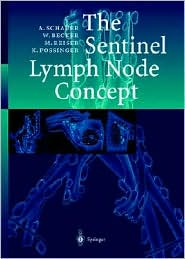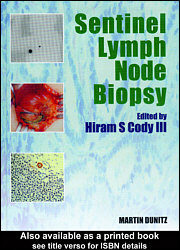The study of the regional lymph nodes is essential to establish the staging of the melanoma and therefore to understand the possibility of a distant dissemination of the melanoma. The greatest risk occurs in melanomas thicker than 1.5 mm (around 25% positivity). This percentage rises to 60% in melanomas thicker than 4 mm.
The sentinel lymph node technique was proposed by Morton in 1990 and adapted by the same in melanoma in 1992, it is proposed as a microinvasive method with a high prognostic value which is performed with the selective removal of lymph nodes that drain from the area where the melanoma. Removal of that lymph node predicts whether the melanoma has metastasized to that lymph node basin. If we have a positive result, the patient undergoes radical lymphadenectomy, if the examination is negative, it is deduced that the regional lymph nodes are intact and therefore the patient is followed according to the follow-up schemes.
The sentinel lymph node study is performed in stages T2, T3, T4 and T1b (ulceration) and is sometimes extended in cases where we have a high mitotic index, in regressive melanoma, if there is angiolymphatic invasion and in juvenile age; the study is undertaken after the instrumental checks have excluded the presence of distant metastases, it is identified by injecting a blue dye (patent blue-V or biosulfan blue) or a radioactive tracer (technetium 99m: Nanocoll or lymphoscint : colloidal particles with a size of 50 to 100 nm) injected into the area of the primary tumor and which is detected by a gamma camera.
The first lymph node to take up the dye or tracer is the sentinel lymph node (all marked lymph nodes must be removed), it is then excised and sent for histological examination. In 15% of cases, the sentinel lymph node can be different from the one that has the greatest uptake. Arriving by the pathologist, the lymph node is divided into two halves, the slices obtained are stained with hematoxylin and eosin and furthermore immunohistochemistry is performed with S100 (marks almost 100% of micrometastases, but also dendritic or Langherans cells and cells of neural origin) and with HMB45 (more specific for melanoma but less sensitive than S100) and examined under a microscope. If the test is positive, the surgeon performs lymphadenectomy in the same session. If the exam is negative, the patient will be followed according to the various schemes.
A negative sentinel node does not rule out the presence of metastases as malignant cells may pass through other lymphatic pathways. Some factors limit its significance, including the presence of a window period in which the malignant cells have not yet reached the lymph node and also the presence of melanoma in critical areas such as the trunk and the cephalic area. For the study of the cephalic area, the search for the marked lymph node with SPET/CT is recommended as it allows a perfect identification of the location of the sentinel lymph node, furthermore the dye is not used in this area as it could leave permanent tattoos on the face.
In recent years, the search for micrometastases has been added to histological techniques thanks to the reaction of the polymerase chains to the reverse transcriptase of the messenger RNA of tyrosine, which appears to be the most sensitive method in the search for occult melanoma cells in the sentinel lymph node. This method is very sensitive, but very expensive and not available in all centres. Various studies show that the sentinel lymph node technique allows the survival rate of patients with melanoma to be increased. False negatives are about 5% and local complications in the order of 8%.
Sentinel lymph node (Mayo clinic): sentinel lymph node video

